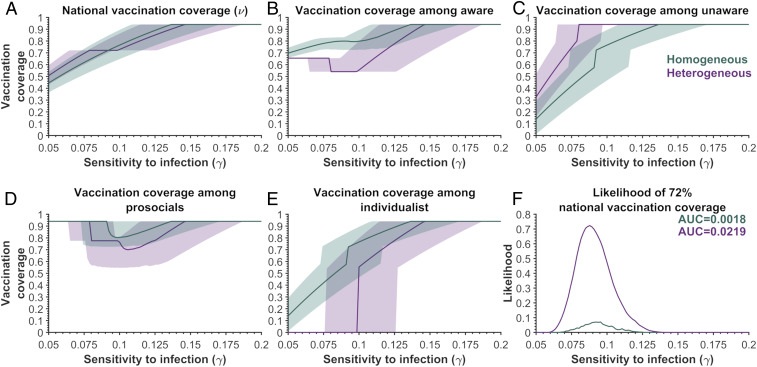Fig. 1.
The vaccination coverages predicted by the Nash equilibrium for various sensitivities to infection (γ) among the aware and unaware groups for homogeneous relative perceived risk (green) and heterogeneous relative perceived risk (purple). (A) The predicted national vaccination coverage, (B) the vaccination coverage among aware individuals, (C) the vaccination coverage among unaware individuals, (D) the vaccination coverage among prosocials, and (E) the vaccination coverage among individualists. (F) The likelihood of achieving the national 72% vaccination coverage obtained in the survey. The results are based on 2,500 samples of relative risk of paralysis and R0 using the sigmoidal function. For the heterogeneous risk, the relative risk of the aware groups was assumed to be ∼4.7 times larger than the relative risk of the unaware group, having the same average perceived risk as the homogeneous population. The proportion of prosocial behavior in the aware population was 69.7% (ρ = 0.697) and the level of comprehension was 54.8% (α = 0.548). The vaccine efficacy was 63% (ε = 0.63), with 94% of the population being eligible for vaccination (ω = 0.94). We used the minimum strength of prosocial behavior (κ) in the prosocial population (Eq. 3) for the sampled perceived relative risk and basic reproductive number, as well as the value of the sensitivity to infection. The area under the curve is denoted by AUC.

